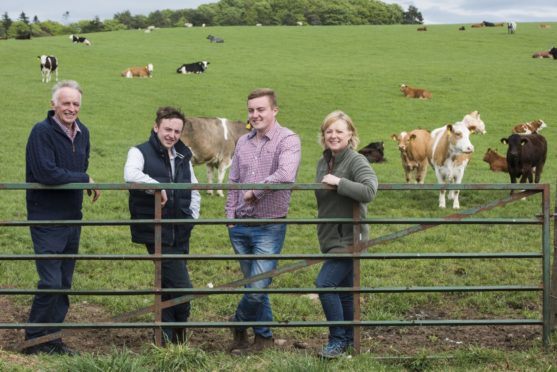Regularly weighing cattle has paid dividends at a mixed farm on the outskirts of Forfar.
The Stodart family, based at Mill of Inverarity Farm, say close monitoring of weights has helped improve the efficiency of their cattle enterprise.
The family – Robert and Alison and their two sons Rory and Tom – run a mixed enterprise comprising 125 breeding cattle, 300 finishing cattle, 700 breeding sheep, 4,500 free-range laying hens, and more than 700 acres of arable cropping.
Their role as host farmers for the Angus Monitor Farm project, run jointly by Quality Meat Scotland (QMS) and AHDB Cereals and Oilseeds, resulted in the purchase of a Ritchie Beef Monitor system.
The system weighs an animal and scans its electronic identification (EID) tag every time it goes for a drink, before sending the information to an online database.
The family also weighs all calves and cows at weaning, and the lowest performing cows are culled.
The Stodarts have used the Ritchie system to monitor finishing cattle and bulling heifers.
Rory said data gathered from the monitor can help identify whether heifers are at the ideal weight for bulling, assess if rations are working and identify animals that are ready for slaughter.
“The app that I have on my phone for the weight monitor has a traffic light system that alerts you to any changes in weight gain for animals,” added Rory.
“This helps identify any animals that aren’t performing as they should and, in theory, can flag issues before they can be seen by eye, for example, pneumonia, fluke and worm burden.”
He said data from the system had shown the impact of disturbing cattle on weight gain – a batch of heifers did not put on weight for five to six days after being taken out of their pens for vaccinations and mucking out.
The system has also been used to give an indication of the quality of the silage being fed to the cattle.
“We changed the ration for a week and were using second cut silage instead of first cut,” said Rory.
“Average weight gain per day went down by around 0.5kg.
“This is a good example that highlighted the importance of good quality silage.”
